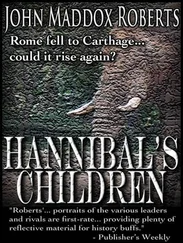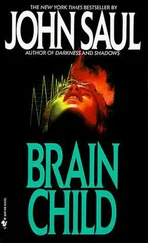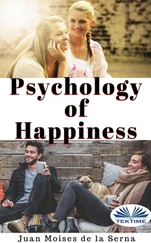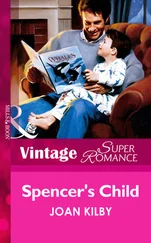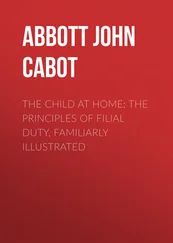1 ...8 9 10 12 13 14 ...22
1.6. Childhood and family in history
Has childhood always existed? What a question! We recall that for Philippe Ariès (1973) the child and the family, such as we know them today, only appeared for the first time in the 18th century. Before that, the traditional, large family was guided by the function of economic survival, whereas today, the modern family is guided by the well-being of its members and the affective function.
In the traditional family, the socialization of the child was rigorous and the child’s duty was obedience. Education took place within the family framework, and the child entered the world of adults and work very early; adolescence did not exist.
On this point, the descriptions of Norbert Elias (1973) about his process of civilization are very enlightening, and this in all aspects of the child’s life: contrary to Rousseau, according to Elias, the child was, in all respects, a “miniature adult”, wearing the same clothes as their parents, eating the same food, sleeping in their bed and going to work with them in the morning.
It was only in the 18th century that the “modern child” appeared among the bourgeoisie and was over-invested in, until it became the “king child” of today. Declines in fertility have obviously also played a role in this phenomenon: when we have a single child, we invest more in them than if we have eight.
Children are no longer an asset (as they still are today in developing countries), but a cost that parents accept or refuse. However, when they decide to have children, they then expect them to be perfect. The result is an overestimation of the skills of the babies and then of the children, an overstimulation in all aspects of development, which requires an effort that may exceed the children’s capabilities, and a total availability of the parents, which is not without complications (Parrat-Dayan 1997).
Indeed, feminism, the employment of women and the desire for equality between men and women will disrupt the family and maternal and paternal roles and further complicate this problem.
The adult, especially initially the mother, realizes that she may make educational mistakes that will ultimately influence the child’s personality. Moreover, as early as the 1940s, psychologists had already begun to speak of these mothers as “bad”, “anxious”, “hostile”, “distressed”, “rejecting”, “overprotective”, “aggressive” and, consequently, responsible for child illnesses (Parrat-Dayan 1997).
Faced with this responsibility and the anxiety of doing the wrong things 3, parents have turned to books on child rearing, which have been enjoying an exponential growth in popularity. These books testify to doctors’ conception of the mother–child relationship in each era and of the place that the child should occupy in society.
Thus, the first book on child care in history was by Vallambert in 1565, centering its discourse on the good understanding required between the nursemaid and the infant, understanding necessary to maintain the balance between moods (Parrat-Dayan 1997). Thus, Vallambert wrote: “If the mother is delicate, if she cannot be available to bathe him, feed him and soothe him when the baby cries, if she cannot stand the child’s odors, it is better to choose a wet nurse”. We remember that Élizabeth Badinter had used the nannying of children by women from privileged backgrounds in those times to support her thesis on the non-existence of the maternal instinct.
In the 18th century, the time of Rousseau, the child was judged to be “good” and it was society that perverts it. Parents were made aware that the human being is “naturally good” and that doctors would be putting the accent on hygiene and disqualifying the nursemaids.
The 19th century was Pasteurian, the fight against microbes became the great cause and doctors took control over mothers to control hygiene. The phrase “child care” appeared, but at that time, the baby was considered only as a digestive tract that had to be protected. The medical establishment would supervise mothering, interfering in the mother–child relationship, and would judge body contact and attachment behaviors as being of no interest. Cleanliness was more important than affection and the child was, in fact, an object.
Then, finally, from the second half of the 20th century, the “child king” that we know today appeared, affection took precedence over hygiene, psychology became the theoretical body of reference for the education of children, the needs and rights of the child became recognized and the baby became a person, according to Dolto’s famous formula. Painless childbirth, massages, songs and so on, all contributed to child well-being in the 1970s.
The child has thus progressively found himself at the heart of parental narcissism, as well as producing overprotection, preoccupations and guilt. The child’s autonomy is theoretically a target, but do these parental positions really favor the subject’s autonomy? These ambivalences are reflected in the choice of child care, interrupting the work of mothers (but not suitable for the new status of women), childminders and crèches.
To conclude, we can see how the conceptions of childhood, family, mothering and the place of the child in society have been, are and will be perpetually evolving social constructs. This will be evident again in the chapter at the end of this book on homoparental families.
1.7. Adolescent development and its contemporary evolution
The problem of adolescence is well known: theoretically at the optimum of health, the second decade of life, also called the “tumultuous decade”, is characterized by significant mortality and morbidity, from avoidable causes related to behavioral problems, against which psychological interventions often have little effect. Yet, while adolescence is a period of vulnerability, it can also be a period of opportunity for prevention, thanks to significant skills in learning and plasticity.
1.7.1. The (psychological and biological) “dual agenda”
Youth vulnerability can be linked to what we have called a “dual agenda” (Assailly 2019), or, to be more precise, the coordination of two trends.
On the one hand, a purely biological, physiological tendency called the “secular trend in puberty”, attested by biologists, physiologists and doctors. Compared with our ancestors, puberty, as observed by physiological and physical changes in the bodies of young boys and girls, appears earlier in life, on average two years earlier than in previous centuries, for both boys and girls.
This secular trend has stabilized and, although it is not completely explained, hypotheses are increasingly being put forward around hygiene, nutrition, chemical pollutants and endocrine disruptors, factors similar to the contemporary obesity epidemic. As puberty is mainly a hormonal triggering phenomenon, all of the factors affecting the hormonal life of the embryo (its first exposure to testosterone) and the adolescent (its main exposure to testosterone) may play a role in this earlier triggering.
On the other hand, a psychosociological phenomenon that can be described as the “increasing precocity of behavioral disorders”, attested by educators and psychologists, among others (“what previous generations did at 14 is now experienced at 12”), and which is reflected in the earlier average age of onset of all kinds of problems (such as regular and excessive consumption of alcohol, tobacco, use of illicit drugs and antisocial behavior).
It is only recently that neurobiologists and brain imaging specialists have helped us to better understand the relationships and interactions between these two historical developments and how risk-taking in adolescence is being constructed in the confrontation between two neurobiological agendas.
Читать дальше

